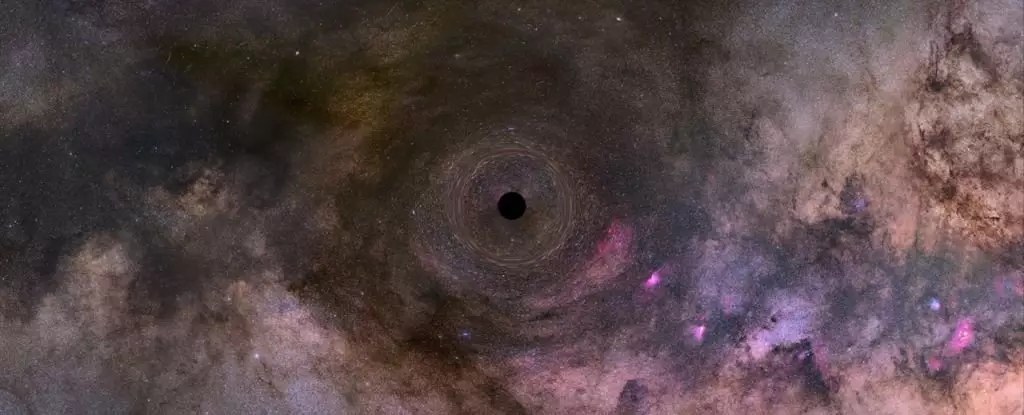Astronomy continually challenges our understanding of the universe, revealing celestial phenomena that defy our imagination. Recently, researchers made a remarkable discovery: a solitary black hole traversing the cosmos, confirmed for the first time. This gravitational titan, approximately 7.15 times the mass of our Sun, is located about 4,958 light-years from Earth. What distinguishes this black hole from the countless others scattered through space is its lone status—most black holes are typically accompanied by companion stars or other celestial objects, but this one stands out in glorious solitude.
Understanding the Discovery Mechanism
Why does the existence of a solitary black hole matter? It provides insights into black hole formation and evolution that previously eluded scientists. Unlike its binary counterparts, this black hole was detected using a fascinating technique known as gravitational microlensing. This method relies on the intense gravitational field of the black hole to bend light from a background star, resulting in an amplification of that light, which temporarily alters the star’s perceived position in the sky. The ability of such a dark object to influence visible light is a testament to the sheer force of gravity at play, further affirming the potential of gravitational microlensing as a tool for identifying invisible celestial bodies.
The Long Road to Identification
Identifying this elusive black hole wasn’t a straightforward endeavor. Data initially collected in 2011 from surveys like the Optical Gravitational Lensing Experiment (OGLE) and Microlensing Observations in Astrophysics (MOA) laid the groundwork for this discovery. Over the next six years, the Hubble Space Telescope diligently observed the warped light patterns caused by the black hole, collecting data through multiple methods. Spectroscopy and photometry analyses from 16 telescopes played critical roles in cross-validating findings, producing a compelling case for the existence of a solitary black hole.
Yet, science is an ever-evolving discipline. A subsequent analysis in 2022 proposed that the light signals could instead be attributed to a neutron star, presenting an alternative explanation that questioned the black hole’s identity. This predicament exemplifies the scientific method’s rigorous nature, where every hypothesis must withstand scrutiny. However, ongoing studies involving updated data and extended observations have allowed researchers to firmly reaffirm the initial conclusion of a black hole, demonstrating the importance of persistent inquiry.
The Challenges of Cosmic Observation
The discovery’s complexity underscores the challenges faced in astronomical observations. A significant obstacle for astronomers involves accounting for “noise” in their data; in this case, bright stars nearby interfered with observations of the black hole’s influence on the background star. Skilled researchers had to meticulously strip away this excessive light to isolate the gravitational effects caused by the black hole. Such challenges are constant in this field, yet they serve as a reminder of the precision necessary to unveil the secrets of the universe.
Furthermore, the analysis, which includes new data from Hubble and updates from OGLE, confirms the absence of any companions larger than 0.2 solar masses within a vast radius of at least 2,000 times the distance from the Earth to the Sun. This meticulous examination strengthens the case for the black hole’s solitary nature, igniting discussions about the possible prevalence of other such lone black holes scattered across the universe.
The Broader Implications of Solitary Black Holes
The confirmation of this solitary black hole is not just a thrilling episode in modern astrophysics; it carries implications that deepen our comprehension of the cosmic tapestry. The universe is likely rife with such free-roaming enigmas, serving as a potent reminder of the gravitational forces pulling hidden narratives throughout the cosmos. In the grand scheme of cosmic evolution, the existence of these “rogue” black holes may shed light on various astrophysical processes, from stellar evolution to the dynamics of galaxy formation.
Continuing to study these solitary giants expands our knowledge of black holes’ diversity and opens new avenues for examining the fundamental laws governing celestial mechanics. As we refine our detection methods and technological capabilities, we may unearth not only more solitary black holes but also redefine our understanding of the universe’s intricate dance of creation and destruction.

